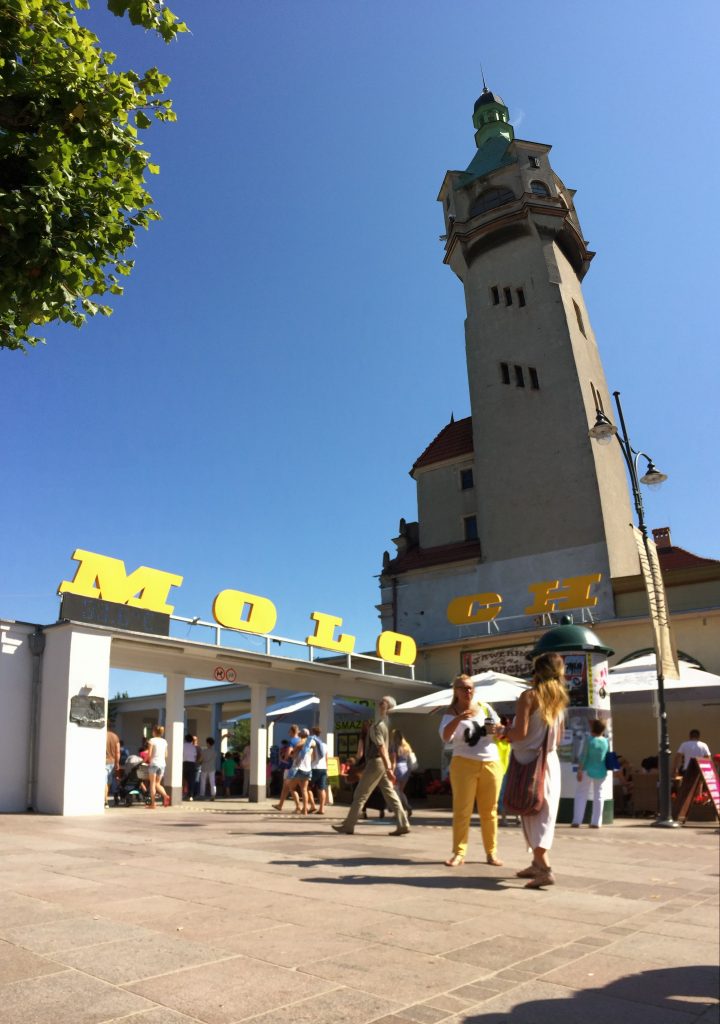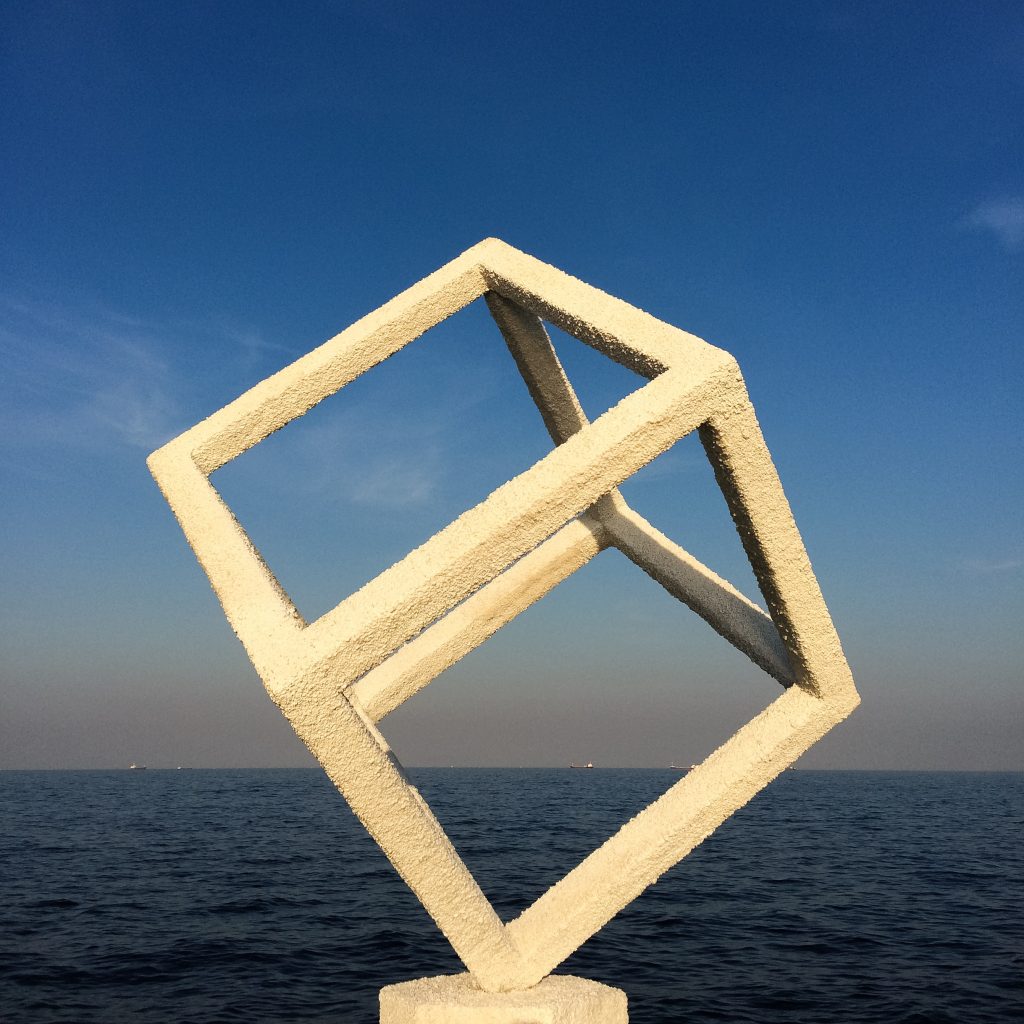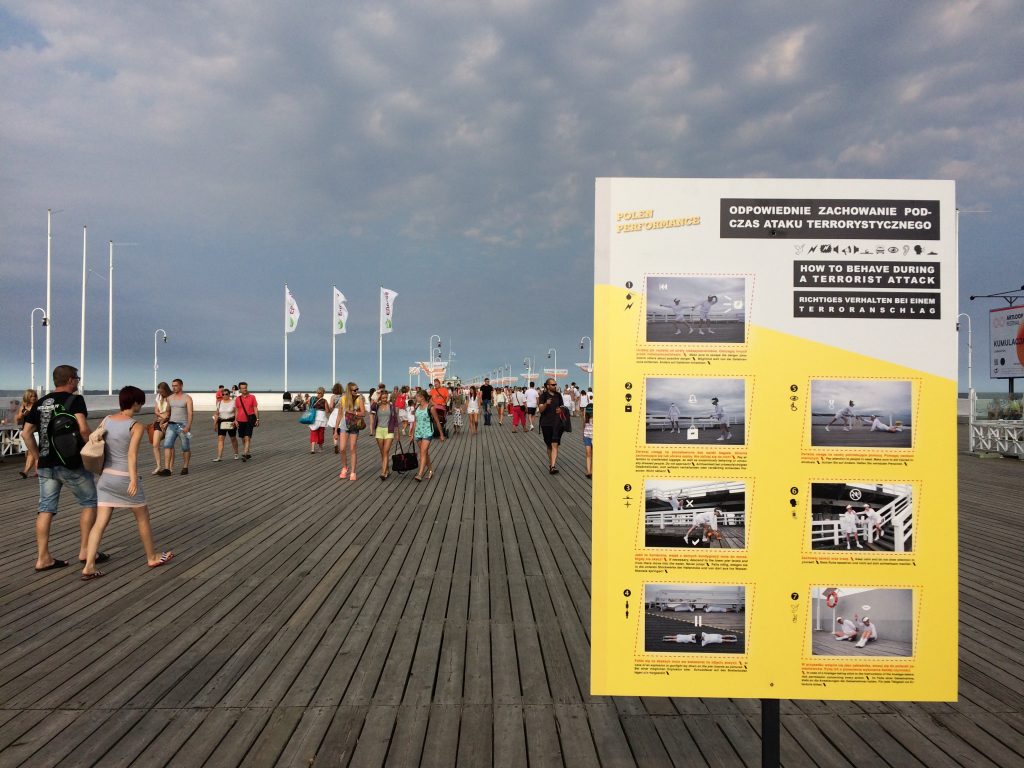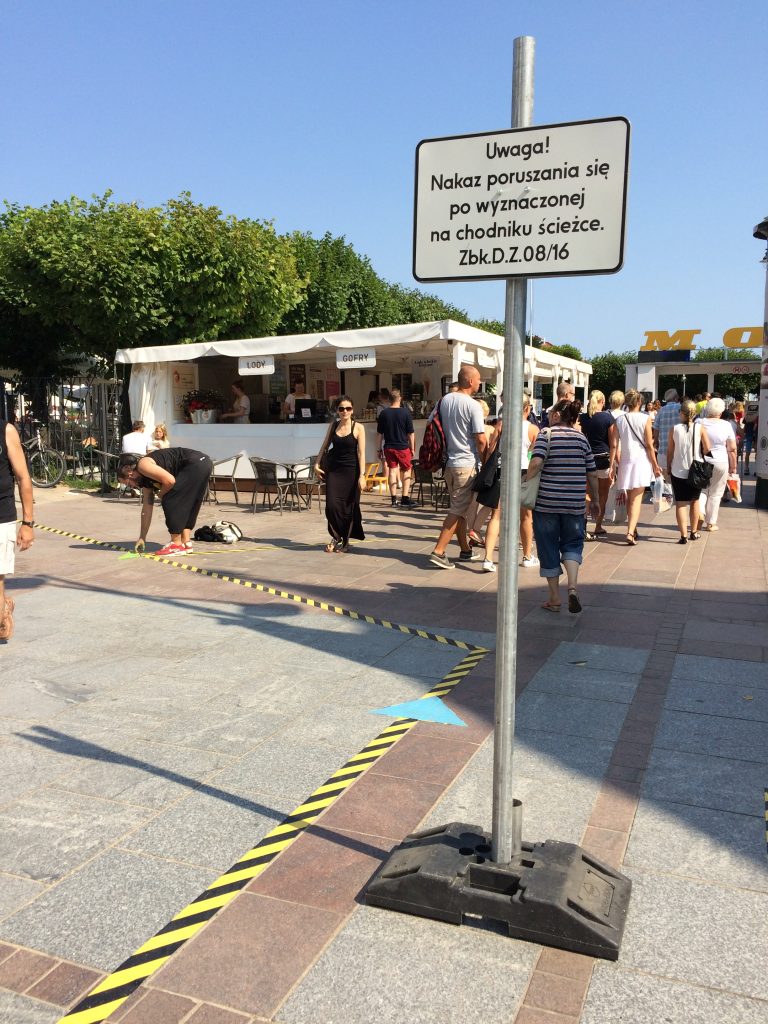
Muito romantic, dir Melissa Dullius, Gustavo Jahn, film screening.
Late summer, a seaside resort and art within the town space — get to know the ArtLoop Festival in Sopot.
Recently we have been presenting to you various artistic activities which take place further away from the big cities of central Poland in order to prove that the Polish art scene is not limited to Warsaw (although a significant number of the most prominent private galleries are situated in the capital city). This time, as a media sponsor, we visited Sopot, a seaside resort teeming with tourists who wish to spend their long awaited free time in the warm sun, sunbath on the beach, and hide from others behind their portable wind screens (while simultaneously screening themselves off from the splendid view of the sea) or simply take a walk along the famous pier and promenade, which constitutes the centre of the local social scene. It is definitely not a straightforward location to present sophisticated artworks. While looking at the works presented at the festival, one could notice different approaches to the role of artists and the “obligations” imposed on art presented within the town space.

Daniel Rumiancew, Moloch, photo Contemporary Lynx.
Is art supposed to be a solely aesthetic experience or should it rather invoke critical reflections about the place where a given work is displayed? What is the assumed role of artists? Are they objective observers; passive participants who are an inherent constituent of the created situation thanks to their being here and now? Maybe artists are activists whose characteristic feature is critical thinking and who want to combat people’s lethargy and lead them out of their comfort zone where they live without engaging in any deeper reflections?
In this short feature we would like to present to you several critical projects, which emphasised the unique features of this specific place and successfully engaged in dialogue with the surroundings and audience. In other words, the central theme of the festival, which was a cumulation in every possible field, gave sense to these projects’ existence.
The Polen Performance duo presented their performance at the entrance of Sopot’s pier. The starting point of their work was the specificity of this location — an extremely popular meeting point, a venue for events and a place where tourists can rest and enjoy their free time. They also made reference to recent tragic events in seaside locations, for example in Nice, or what happened on Sopot’s promenade just a year ago when a mentally unstable person drove a car in this crowded pedestrian zone and caused injuries to many tourists who did not expect to be in danger. The duo wanted us to pay attention to the fact that when we try to relax and loosen up we do not expect that there may be something may be threatening to us, and emphasised that we are not able to focus on potential dangers and protect ourselves against it while on vacation. In today’s world every one of us can become a victim. Taking this into account, the duo prepared charts with pictures and instructions on how to behave in specific dangerous situations. Although this topic is very serious, in the charts we can find the following valuable pieces of advice: ‘Learn several phrases from the Qu’ran by heart’ or ‘If you get a chance, take a photo of the terrorists with your camera.’
Cumulation of and confrontation with the crowd is also a subject of Zbiok’s work. The artist assumed that crowd equals chaos, rebellion and the lack of respect for any rules, and that there are specific principles which shape the crowd’s behaviour. On this basis, he decided to set clear boundaries, mark out paths and introduce traffic regulations. Aside from the road signs on the ground and signposts, there was a person instructing people through a megaphone, reprimanding them and giving orders. This person was an integral part of the project. In this way, Zbiok tested how likely it is that people follow instruction and how much time they need to respond to orders. He asked himself the question whether we watch people who surround us and behave as an integral part of a bigger community or whether every one of us absent-mindedly goes on with our own lives…

Oskar Dawicki, Untitled, photo Contemporary Lynx.
A notice by Oskar Dawicki which could be found on the Sopot’s pier read: ‘Please kindly be informed that this pathway leads nowhere.’ If we cannot get anywhere by following it, why should we bother walking along it? This situation shows exactly how pointless our activities and reactions are when we follow the crowd. We follow our herd instinct and only after some time we notice that we are actually walking on letters which make up words, and when read together these words are a message or a warning sign for us. In order to be able to read this message, however, we need to follow this very pathway. By preparing this message, the artist gives meaning to this pointless activity. Nevertheless the conclusion of the whole situation takes it to an even more absurd level. Sosiński’s work was also about the absurd, but to a great extent. This work was actually not finished but was imagined at the end of the pier — the place where we can have a look at the magnificent panorama of the sea; an endless, ideal, natural space which we try to enter by walking along the pier. The project entitled ‘A Postcard from Sopot’ was aimed to encourage people to take a picture of themselves by the sea, or rather by the eponymous postcard. Usually the pictures we take are not left as they originally were. We edit them and apply filters in order to make them more beautiful. We want to have a sea which is more blue and the sky which is more sky blue. Pictures have to be ideal after all… Why do we need to see the real sea at all? Wouldn’t it be better to take a picture of ourselves by an ‘ideal’ picture of the sea? Why not to use a banner which covers or corrects nature?
Michał Długosz also decided to challenge the ideal and sickly sweet image of the seaside resort. A pier is a place where an enormous number of people meet in the summertime and out of season. The murmur of anonymous voices hides hundreds of personal stories… Długosz gave power and meaning back to every one of these voices by playing through loudspeakers what he had heard, wrote down and recorded. He presented stories from everyday life, gossip, account of extraordinary events and disappointments in love… We could hear painful stories, vulgar language and distress. These things stand in clear opposition to the sugary picture of jubilant, elegant people smelling of perfume and walking into the sunset. This is life. It is real and austere, and stories are covered with sea salt rather than sugar. Salt was also an element of Jakub Woynarowski’s work. His barriers covered with salt acted as the border point where destructive elements and different states of aggregation clashed, i.e. the sun, water, air and stones; liquids, solids and gases. Beside all these there is a human being standing at the border between the destructive powers, between the pier and the sea, as if he came there by chance. He stands still and absent-minded in this very place. Maybe, though, we are able to get to the bottom of the matter in this specific moment, which is a bit accidental, in a situation when we do not apply rational thinking and follow the crowd’s intuition and our own subconscious instincts. Perhaps by reaching the border we can experience something more and see beyond the social and cultural patterns, which were the topic of works by the majority of artists, that we take with a pinch of salt. Maybe the moment when we reach the end of a pier or pathway, finish our seemingly pointless walk, confront ourselves with a critical situation, stand surrounded by uncontrollable powers is the key point in our life. After all, the sea is something finite, but on the other hand, it is widely open. It epitomises enormity, endlessness and is truly overwhelming. On the other hand, it is something ephemeral which slips through our fingers. It encourages us to take a deep breath while admiring the wide space, but it also makes us short of breath, filling up our mouth and melting into a dark abyss of the salty water. Contemplation and confrontation gives us an opportunity to feel at peace with ourselves and united with something beyond the crowds of holidaymakers — with destructive powers, constant changes in the world, nature and the earth. The cuboid work of Jakub Woynarowski is a symbol of this state of mind.

Jakub Woynarowski, Albedo, photo Contemporary Lynx

Polen Performance, HOW TO BEHAVE DURING A TERRORIST ATTACK, photo Contemporary Lynx.

Sławek ZBIOK Czajkowski, Loop, photo Contemporary Lynx.











